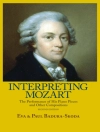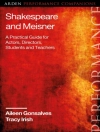What kinds of terror lurk beneath the surface of White respectability? Many of the top-grossing US horror films between 2008 and 2016 relied heavily on themes of White, patriarchal fear and fragility: outsiders disrupting the sanctity of the almost always White family, evil forces or transgressive ideas transforming loved ones, and children dying when White women eschew traditional maternal roles.
Horror film has a long history of radical, political commentary, and Russell Meeuf reveals how racial resentments represented specifically in horror films produced during the Obama era gave rise to the Trump presidency and the Make America Great Again movement. Featuring films such as The Conjuring and Don’t Breathe, White Terror explores how motifs of home invasion, exorcism, possession, and hauntings mirror cultural debates around White masculinity, class, religion, socioeconomics, and more.
In the vein of Jordan Peele, White Terror exposes how White mainstream fear affects the horror film industry, which in turn cashes in on that fear and draws voters to candidates like Trump.
Inhoudsopgave
Acknowledgments
Introduction: Whiteness, Politics, and Horror
1. Whiteness Under Siege, Part 1: Haunted House Films
2. Whiteness Under Siege, Part 2: Home Invasions
3. American Dreams: Fantasies and Social Mobility in Dream House and Drag Me to Hell
4. Sad White Men and Their Demons: Possession Films
5. Suffering and Reluctant Mothers Meet Their Match: Horrific Children
6. Motor City Gothic: White Youth and Economic Anxiety in It Follows and Don’t Breathe
7. Surveilling Whiteness: The Horrific Technology Film
8. Making Horror Great Again: The Horror Remake
Conclusion: Horror in the Trump Era
Bibliography
Index
Over de auteur
Russell Meeuf is Professor in the School of Journalism and Mass Media at the University of Idaho in Moscow. He is author of Rebellious Bodies: Stardom, Citizenship, and the New Body Politics and John Wayne’s World: Transnational Masculinity in the Fifties.












